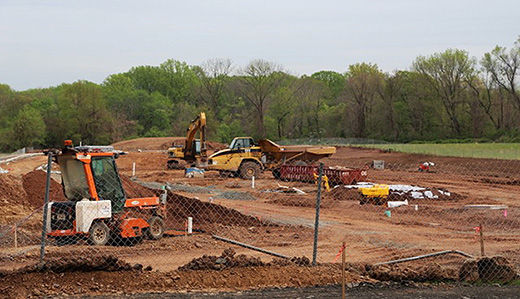By John Baker and Roger Williams
As the Institute for Advanced Study — or IAS — doggedly pursues development of the most important part of the Princeton battlefield it has the temerity to claim that its faculty housing plan “underscores the Institute’s longstanding support for the Princeton Battlefield State Park …. .” The truth is that the IAS has historically had to be dragged into preserving the battlefield, and only after lengthy controversies following which the institute was generously compensated for its land.
Many area residents remember these drawn-out battles and recognize the IAS claim of “longstanding support” to be disingenuous. The institute’s “history be damned” attitude is most egregious when its hired historian-pundits argue that nothing historic happened on its land. To the contrary: The vast majority of historians agree that Maxwell’s Field, the site of the current controversy, is where George Washington personally led a counterattack that won the Battle of Princeton and turned the tide of the American Revolution.
The battlefield park exists today because preservationists have fought tirelessly to save this hallowed ground over the years. Moses Taylor Pyne, the wealthy philanthropist who transformed Princeton University, twice stopped early development efforts by buying battlefield land. Today, the park, established in 1946, includes Pyne’s land.
In 1962, Princeton designated a wooded, 12-acre tract of land for preservation in its Open Space Plan. New Jersey wanted to buy this land, known as the “Weller tract,” but had no funds to do so. IAS paid $100,000 to acquire it in 1966. After purchasing the Weller property, the institute engaged in backroom politics to remove the open space designation; the local planning board changed it in executive session without a public hearing. In 1969, the IAS sought to rezone the tract to build 10 faculty houses. The tract’s historic pedigree was obvious, but an institute attorney complained: “What’s wrong with the present park?”
When the state announced in late 1969 that IAS’s development plan was unacceptable and it again wanted to buy the land, the institute successfully lobbied state officials to reconsider. The fight dragged on for years. The Princeton Battlefield Society was created in 1970 as a result of the institute’s development ambitions. In 1971, IAS-hired historian Julian Boyd scorned preservationists for their “outraged patriotism.” The controversy finally ended in 1973 when the IAS agreed to sell the Weller tract and another property — 32 acres in total — for $335,000, a tidy profit for its land.
In March 1983, IAS became a would-be developer-for-profit, proposing 400 to 600 housing units on 230 acres along Quaker Road. The institute hoped to make $5 million to $8 million from this venture. Opposition was immediate and intense. One year later, IAS abandoned the plan, saying it was “not interested in selling its land or its development rights.”
In 1990, the issue erupted again when the IAS sued the local planning board over a plan to downzone institute land, totaling almost 600 acres, to preserve open space. Twice during this time, IAS rejected any suggestion of development immediately adjacent to the campus, in the vein of what it now wants to do at Maxwell’s Field. Any cluster development there, it argued, ironically, “would destroy the Institute’s reflective tranquility at the heart of the campus.”
Negotiations again continued for years. The pressure to save IAS acreage only grew stronger. By 1993, the institute’s dormant, for-profit development plan had been whittled down to 276 homes on 105 acres along Quaker Road. In 1997, 14 years after it began, the struggle ended when the IAS accepted $13 million to give up development rights on all of its 589 acres (now known as Institute Woods). IAS ultimately contributed $1.2 million toward the conservation of the property.
It is important to keep this history in mind during the current dispute over Maxwell’s Field. The institute likes to pat itself on the back for its so-called “longstanding support” of the battlefield. However, as long-time residents of Princeton, with fathers who opposed the IAS development plans of the ’60s and ’70s, we remember better. The record clearly shows, that when it comes to Princeton’s unique historical assets, the institute has acted not as an educational institution, with a moral obligation to this community, but rather as a land developer.
John Baker and Roger Williams are both Princeton area residents and natives. Mr. Baker is the son of the first president of the Princeton Battlefield Society. Mr. Williams is a member of the board of the Princeton Battlefield Society.

